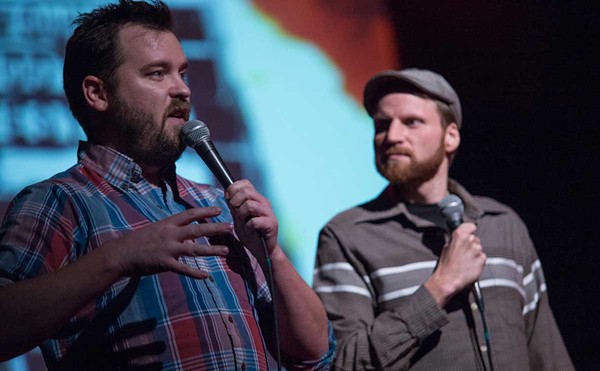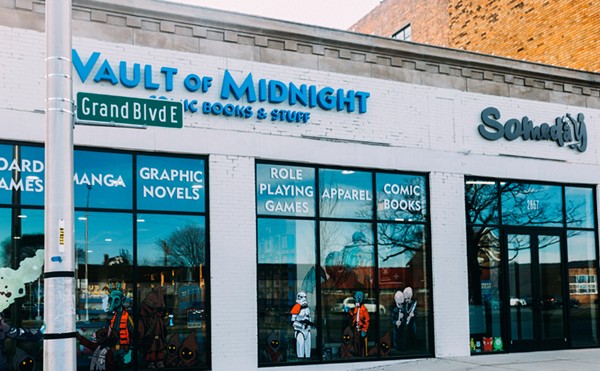Thirty-five years ago, Detroit reveled in the Tigers’ first World Series championship in 23 years. For a major American city climbing from the rubble of racial unrest, it was an important, if short-lived, victory. But the city was changing, the people were changing — and without our realizing it, the game we celebrated that fall was changing forever. For everything the victory meant to us in the process of a much-needed reunification, it was, for all that, the last time we played the game.
Baseball is more about America, and more about time, than we realize. It has long been played in the “vacuum” of sun-baked ballparks, providing us with momentary relief from the day-to-day struggle of real life and uniting us to cheer on the heroes we inherited through the geographic accidents of our births.
But the game is not played in a vacuum, and its implications are more far-reaching than we imagine. What has gone on in stadiums throughout the country has often had a much bigger impact on the world around them. Whether it was the Black Sox scandal of 1919 or the much-needed and inevitable integration of the game in the ’40s, baseball has always kept pace with the nation, and often has led the way.
In 1968, we could not have fully understood the importance of baseball for Detroit, and we certainly could not have possessed the perspective necessary to understand what was happening to the country, to the city, to the game itself.
I was 9 then. My window on the world was limited to the congruous concrete blocks that surrounded my white suburban street, and in the 1960s, the suburbs were a sheltered place. All I knew of the outside world came from the only other window I had — a 27-inch, black-and-white RCA television set. It was the most prominent thing in our living room, encased in plastic with a harvest gold finish and the embossed emblem of “Nipper” the dog burying his nose dutifully into the expanding horn of an early Victor phonograph. This trademark of the Victor Company was created long before the Depression made a merger with the Radio Corporation of America inevitable, and it was just this strange marriage of old and new that made the ’60s so turbulent, and in many ways, so final.
On that television I had watched Ed Sullivan introduce America to the Beatles and the Rolling Stones; I had stared with my family in shock at the assassination of President Kennedy; and as the years progressed, I witnessed the war in Vietnam, racial unrest in the cities and the untimely ends of Bobby Kennedy and Martin Luther King Jr.
It was from this same window that I watched the Tigers rise to become a team to be reckoned with.
We rarely went downtown in those days. More often than not, we watched the Tigers on television. Certainly there were occasional excursions to Tiger Stadium, complete with a carload of suburban kids staring in wonder at the oncoming skyline, and playing the crazy game of counting the bars that dotted Michigan Avenue from Dearborn to Trumbull Avenue. But in 1967 the excursions came to an end, and the television and the talk around the suburbs suddenly focused on the racial unrest that had thrown the city into the grip of a riot.
Now, for once, beyond television, the news was real to me on many fronts — from the presence of National Guardsmen checking inside car trunks and behind hubcaps at the local Lucky Market to the incessant sound of gunfire heard in the background of telephone conversations with my grandmother, who lived dangerously close to the “action.”
It was, for everyone, an unwelcome distraction. It distracted Tiger fans from a seemingly pennant-bound ’67 team, and the reality and gravity of the situation swept everyone into a higher level of consciousness — one in which the ephemeral nature of baseball and sports could not hold enough meaning. In the end, the Tigers would fall short, and the city would stand in ruins.
For a 9-year-old, the ’60s held an eerie surrealism, and I vividly remember my father driving us through the riot’s aftermath as we silently surveyed burned heaps that had once been homes and craned our necks into jagged craters where two- and three-story buildings once stood. It seemed unreal and unexplainable, but we can only view time through our own limited frame of reference, and for me, the city had never before exposed its pressure cracks. It had always been shown to me through a carefully edited viewfinder.
America’s written history is brief, and more close in time than we realize. In the South, it is not unusual to encounter individuals, to this day, who speak of the Civil War as though it had just happened.
Baseball history is similarly contracted, and in 1968 the glory days of baseball’s past were very close to the present: There were still many active players who had been veterans of the Negro Leagues (a scar only scarcely healed). Mickey Mantle (then in his final year) had played his rookie season alongside Joe DiMaggio in the Yankee outfield. Carl Yastrzemski had only recently replaced Ted Williams. In 1968, as always, there were two standings in baseball: the American and National leagues. There were no divisions, no playoffs, no wild cards. In baseball, if you finished on top, you won the pennant.
In 1968, a year in Detroit more full of trepidation than hope, the Tigers boasted a formidable lineup, complete with Al Kaline, Jim Northrup, Willie Horton and “Stormin’” Norman Cash. It was a team that featured the versatile Mickey Stanley and the pinch-hit “pop” of Gates Brown. The pitching staff was strong, bolstered by the presence of an ever-dependable Mickey Lolich and the ever-controversial Denny McLain, who would become the last of baseball’s 30-game winners (no modern manager would dare put his multimillion-dollar ace at such risk), finishing with an incredible 31-6 record. After clinching the pennant in a series with the Yankees in September, the team went on to face the defending champions, the St. Louis Cardinals.
The World Series was still played in the afternoon, a throwback to the game’s roots and another tradition that was soon to bow to the modern commercialization of the game. Then, it seemed only natural, and I recall my fourth-grade teacher dutifully rolling out the giant black-and-white TV (usually reserved for “educational” programming) so we could watch the first Tiger World Series
since 1945.
It was exciting, but it would also be a frustrating ride. In game one, Hall of Fame-bound pitcher Bob Gibson set a Series record by striking out 17 Tigers. The class was stunned, and I vividly recall a disappointed Al Kaline shaking his head and regarding his bat in befuddlement as he walked away from home plate.
The Cardinals were a strong adversary, and in a short time led the series 3-1, a situation seldom overcome in baseball history. But the Tigers rebounded, mostly through the presence of Lolich, who added insult to injury by hitting a homer (a situation nearly impossible to conceive of in the American League today, with the advent of the designated hitter).
In the end, the Tigers won, and I recall running home from school to watch the last inning of the seventh game on the Victor TV in my living room — an overjoyed Bill Freehan catching the final pop-up and embracing a jubilant Lolich before the two were surrounded by frenzied teammates.
It was a proud moment in Detroit, and there was a great deal of celebration. But for all of the festivities, the moment could never prove enough to offset the reality of what had happened just a year before. Baseball is only a game, and whatever phoenix the Series managed to resurrect in the warm ashes of the city, there was no doubt that its growth would be stunted.
Somehow, we all knew it would be a long time until things were back to normal. In many ways we are still recovering.
In 1969, the Tigers would not be back for the World Series. In fact, they would not return for 16 years. By 1969, the game had changed. There were two divisions in each league: East and West, and after a series of playoff games, the “Amazing” Mets went on to win it all.
For baseball, the changes were coming fast. In 1973, the designated hitter was introduced into the American League, making it unnecessary for pitchers to bat; expansion would eventually result in a three-divisional league format that would, in turn, introduce a “wild card” team; and in 1997, inter-league play would debut, burying the longstanding mystery that always surrounded the hypothetical match-ups that, heretofore, could only materialize in spring training or in a World Series. In each case, commercialization had sought to drive interest in the game through dilution and brash attempts at incongruent showmanship. Early in the face of all this change, the purist turned away in disillusion, and eventually, owner squabbles and interminable player strikes came to shake the confidence of anyone even remotely interested in the game.
After the 1968 season, Mickey Mantle hung up his spikes. It seems like baseball had done the same, and for a 9-year-old kid, it all seems to have been left behind, left in the black-and-white of an RCA TV screen — the last time we played the game.
Jon Milan is a Detroit-area writer and musician. E-mail [email protected]




